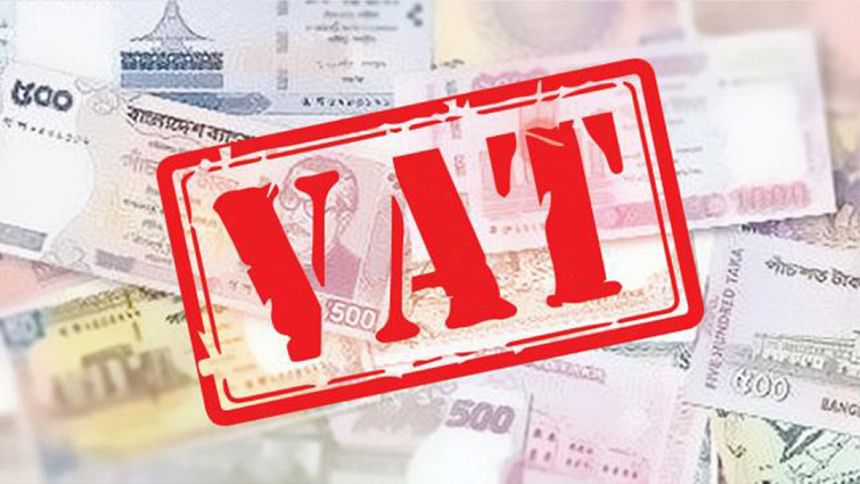Consumers hit by higher VAT

-
VAT accounts for 37.32pc of the total revenue collection target of Tk 296,201cr in fiscal 2018-19
The burden of value-added tax is set to get heavier from next fiscal year as the revenue authority looks high and low to find ways to collect the major share of its ambitious target from the indirect tax.
Of the total revenue collection target of Tk 296,201 crore in fiscal 2018-19, VAT, which is borne by consumers, is expected to bring in 37.32 percent of the amount, followed by income tax, import and supplementary duty.
This means, the National Board of Revenue would be gunning for VAT collection of Tk 110,543 crore -- 32 percent higher than the current year's target.
To attain the lofty target, the NBR has increased the VAT and supplementary duty rates on 56 goods and services, meaning consumers will have to pay higher prices.
The move is expected to yield an additional Tk 8,000 crore for the NBR, said an official of the revenue authority requesting not to be named.
For example, anyone who wants to commute from one part of Dhaka city to another part by using ride-hailing service offered by Uber and Pathao will have to pay more after the revenue collector introduced a 5 percent VAT on the increasingly popular taxi service.
Until recently, branded clothes lovers had to count 4 percent VAT. From next fiscal year, they will have to pay 5 percent.
Garments buyers from non-branded and imported clothing stores will also face the same rate.
Furniture will also become pricier because of hike in VAT rates by one percentage point, both at the trading and making stages.
Similarly, consumers will also have to bear the burden of increased prices for hike in SD rates on 17 items, including energy drinks, cosmetics, toiletries, bathtub, jacuzzi, by up to 10 percentage points.
Some 20 percent SD has been introduced on chartering of aircraft and helicopter. Air ambulance has been exempted.
A number of products on which VAT is collected based on tariff value or administered prices will also see a hike in VAT rates owing to the spike in tariff value.
Goods for which tariff value has been raised include tomato paste and ketchup, fruit juices, coloured paper, reading glass, optical frames and spectacles.
In addition, the rate of advance trade VAT (ATV) at the import and trading stage has also been increased to 5 percent from existing 4 percent.
Indirect tax has been given more emphasis than income tax in revenue collection, said the Centre for Policy Dialogue in its analysis on fiscal measures for fiscal 2018-19 on June 8.
Citing the hike in VAT rates to 2 percent from 1.5 percent for flats of up to 1,100 square feet, it said the move will raise the cost of housing for the lower middle income group. The increased VAT on IT-enabled services may affect youth employment.
The number of slabs of VAT rates has been brought down to 5 from 9 at present, and in this process of condensation, the VAT on some items becomes lesser too.
For instance, the VAT on non-air conditioned restaurants and English-medium schools was lowered.
“We have tried to ensure a balance while revising the VAT rates such that the common people do not feel increased pressure. We have done a lot of analysis,” said Md Rezaul Hasan, NBR member of VAT policy.
From next year, VAT for 10 items including drugs for treatment of cancer and kidney disease as well as cheap bread, buns, cakes, biscuits and rubber sandals has been withdrawn.

 For all latest news, follow The Daily Star's Google News channel.
For all latest news, follow The Daily Star's Google News channel. 



Comments